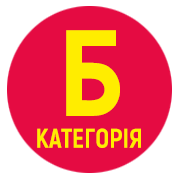THE INFLUENCE OF CHANGES IN COMPETITION RULES ON TACTICS OF WEIGHT CATEGORY CHOICE IN WRESTLING
DOI:
https://doi.org/10.32782/olimpspu/2024.1.13Keywords:
Olympics, Tactics, Elite Athletes, Competition, Result.Abstract
The article presents the types and specifics of tactics of the weight category choice in women’s, freestyle and Greco-Roman wrestling. In modern scientific papers participation tactics of athletes in the competition system is covered fragmentally. Moreover, tactics of weight category choice is not described at all. We analyzed the dynamics of performances and results of 72 elite wrestlers who won gold, silver and bronze medals at the Games of XXXI Olympiad 2016 in Rio de Janeiro in different weight categories (four athletes in each one). In general, we compared the results of 24 women, 24 freestyle and 24 Greco-Roman wrestlers. There were discovered eight types of tactics which athletes used during four seasons in 2013–2016 Olympic cycle. Some types provided performances only in one Olympic weight category, while others were connected with participation in tournaments in two or even three weight categories during the same season. In all cases elite wrestlers used one weight category (mainly an Olympic one) as prior, while one or two weight categories were considered as additional. We established that the choice of the particular weight category depended on the specifics of the Olympic qualification system-2016, the prospects of obtaining the Olympic quota place in the International Qualification Tournaments and the results demonstrated at official international events in various weight categories. It was also discovered that in 2013 and 2016 the most popular was a tactics that involved performances in one prior Olympic weight category (70.83% of wrestlers used it). In 2014 and 2015 some athletes (1.39–11.11%) performed in the prior weight category and used one or two of them as additional. The largest number of tactics was used by representatives of women’s and freestyle wrestling as the upper limits of weight categories were changed more than in Greco-Roman wrestling.
References
Biac M., Hrvoje K., Sprem D. Beginning age, wrestling experience and wrestling peak performance-trends in period 2002–2012. Kinesiology. 2014. № 46 (S-1). P. 94–100.
Modelling Mixed Martial Arts Power Training Needs Depending on the Pre-dominance of the Strike or Wrestling Fighting Style / A. Chernozub et al. Ido Movement for Culture. Journal of Martial Arts Anthropology. 2018. Vol. 18 (3). P. 28–36. DOI: 10.14589/ido.18.3.5.
Development of the Wrestling Competition Analysis Form According to the Latest Competition Rules / О. Isik et al. International Journal of Wrestling Science. 2017. Vol. 7 (1–2). Pp. 41–5. DOI: 10.1080/21615667.2017.1422815.
Tactical Styles of Fighting and Functional Asymmetry of the Brain Among Elite Wrestlers. Ido Movement for Culture. Journal of Martial Arts Anthropology / G. Korobeinikova et al. 2020. Vol. 20. № 4. P. 24–30. DOI: 10.14589/ido.20.4.4.
Latyshev M., Holovach I. Improvement of the Technical and Tactical Preparation of Wrestlers with the Consideration of an Individual Combat Style. SportMont. 2021. Vol. 19. P. 23–8. DOI: 10.26773/smj.210604.
The analysis of the results of the Olympic free-style wrestling champions / М. Latyshev et al. Journal of Human Sport and Exercise. 2020. Vol. 5(2). P. 400–10. DOI: 10.14198/jhse.2020.152.14
Lopez-Gonzalez D.E. Technical Profile of Top Four Women’s Wrestling Teams in the 2014 Senior World Championships and Correlations with Selected Performance Variables. International Journal of Wrestling Science. 2015. Vol. 5 (1). P. 35–41. DOI: 10.1080/21615667.2015.1028124.
Tunnemann H., Curby D.G. Scoring Analysis of the Wrestling from the 2016 Rio Olympic Games. International Journal of Wrestling Science. 2016. Vol. 6 (2). P. 90–116. DOI: 10.1080/21615667.2017.1315197.
United World Wrestling. [cited 2023 Jan 10]. Available from: https://unitedworldwrestling.org/.
Participation tactics of elite freestyle wrestlers in competition system in 2013-2016 Olympic cycle / O.R. Zadorozhna et al. Pedagogy of Physical Culture and Sports. 2021. № 25 (5). P. 275–85. DOI: https://doi.org/10.15561/26649837.2021.0502.







